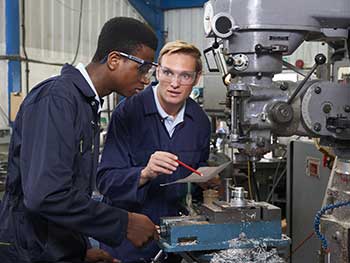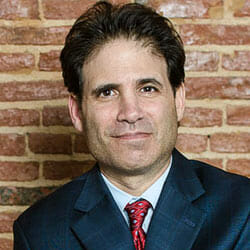Danger in the Workplace
 Machinery of all kinds is characterized by movement: the entire machine moves, or it has moving parts, or both. Accidents can happen to anyone who works with machinery. Those whose jobs involve construction, manufacturing, warehouses, factories, industrial settings, mines, farms, and landscaping are at serious risk of injury or death. Millions of employees work in these environments every day. And the persons who maintain, repair, or unjam the machinery? They are at even greater risk.
Machinery of all kinds is characterized by movement: the entire machine moves, or it has moving parts, or both. Accidents can happen to anyone who works with machinery. Those whose jobs involve construction, manufacturing, warehouses, factories, industrial settings, mines, farms, and landscaping are at serious risk of injury or death. Millions of employees work in these environments every day. And the persons who maintain, repair, or unjam the machinery? They are at even greater risk.
According to the Department of Labor’s Bureau of Labor Statistics (BLS), in 2014, machinery of all kinds accounted for 392 fatalities. If you count certain other categories such as “tools, instruments, and equipment,” the number increases by over 200 more. The largest number for 2014, the most recent year with complete data, is found if we look at the category “contact with objects and equipment,” in which the number of deaths adds up to 715. For Maryland, in 2014 for the same category, there were 11 deaths.
In 2015 and 2016, several fatal machinery accidents have made the news in our state. May 2016 brought the death of a worker in Jessup because he became trapped inside a machine. In January 2016, a worker for a landscaping company in Montgomery County died when machinery landed on top of him. And, at a Prince Georges County rock quarry in April 2015, a worker died after becoming trapped in machinery.
Injuries Are Often Severe
Machinery doesn’t just cause fatalities; it also injures a lot of workers. The total number of all kinds of workplace-related injuries are roughly 3 million per year (using 2014 figures), and some peg injuries due specifically to contact with machines at around 50,000 per year. Under OSHA’s new severe injury reporting program, the figures demonstrate that construction and manufacturing, as opposed to other workplaces, have the greatest number of severe injuries. In 2015, there were 7,636 hospitalizations and 2,644 amputations in all workplaces, but many of these injuries came from contact with machinery. If you or a loved one has been injured in a construction accident in Baltimore, it’s important to seek legal help. Contact a Baltimore construction accident lawyer to protect your rights and get the compensation you deserve.
Injuries in the construction industry that can result from machinery include:
- Being crushed by heavy equipment
- Electrical burns and electrocution from machinery coming in contact with power lines
- Impact injuries from swinging buckets or moving machine arms, resulting in broken bones or traumatic brain injury
- Burns from welding equipment
- Falling from the cab of heavy equipment.
Machinery in manufacturing and other industrial settings can be responsible for the following kinds of injuries:
- Amputations
- Crushing injuries, either from falling machinery or from being crushed between a machine and a fixed object
- Electrical shock and electrocution
- Burns from machines that cause explosions and from machinery such as boilers
- Impact injuries
- Hearing loss or blindness from machines that cause explosions.
Amputations and crushing injuries are especially problematical for workers. Not only are they painful and disfiguring, they also limit future employment and earnings potential.
You can be injured using machinery that is operating properly. However, if machinery does not receive regular maintenance, is poorly designed, or is defective in some way, the chances for serious injury or death multiply. If machinery is not working properly, negligence on the part of the employer, the machine’s manufacturer, or the machine’s designer may become sufficient cause for bringing a case.
Limitless Hazards
Remember, any machinery that moves, or that has moving parts, can injure you. In the construction trade this includes:
- Bulldozers
- Cranes
- Dump trucks
- Bucket trucks
- Trenchers
- Excavators
- Pipelayers
- Backhoes
Manufacturing, industrial settings, factories, warehouses, machine shops, refineries, and mines can be sites for the following commonly used machinery:
- Drill presses
- Lathes
- Fork trucks
- Fork lifts
- Mixers
- Hoist systems
- Conveyor belts
- Packaging machines
- Compression equipment
- Boilers
- Chemical blenders and storage vats.
How Can I Keep Myself Safe While on the Job?
If you work in an occupation with a high chance of injury from machines and equipment, be smart and be safe while you are near or working with machinery. While a certain amount of danger will still remain, you can decrease your risk of injury by doing the following:
- Always wear protective gear.
- Never remove safeguards. They are on the machinery to keep you from harm.
- Stay focused on the machine and your surroundings.
- Never operate machinery under the influence.
- Never joke around or horse around near machinery.
- Do not allow clutter to accumulate in your workspace.
- Do not operate machinery for which you are not trained.
- Never perform maintenance or repairs on any machinery or equipment that has not gone through lockout/tagout procedures to shut it down and de-energize it.
- Know the basics of preventing “caught-in” or “caught-between” accidents.
You Have Legal Protections and Rights
If you work with machinery and heavy equipment, you and your family can pay a high price if you are injured or killed. Therefore, it is crucial to know that you have rights. By law, you are entitled to protective safety gear, guards on machines, properly maintained equipment, training, and the enforcement of safety rules and regulations such as lockout/tagout procedures.
Unfortunately, sometimes employers cut corners or ignore laws and regulations meant to protect workers. One look at OSHA’s top 10 violations is enough to inform you of that fact. Number five on the top ten list is not following lockout/tagout procedures, and number nine is not having machine guards installed. In 2015 these two items were responsible for a number of serious injuries. Any worker who was seriously injured because the employer did not follow the law would have justifiable reason to consider legal action.
Injured on the Job? Call Your Local Baltimore Work Injury Lawyer.
Employers, businesses and managers have a responsibility to ensure proper training and as safe a work environment as possible, in accordance with all regulations. Unfortunately, equipment malfunction, co-worker negligence, and bad decisions can place workers at risk. Steve Heisler has devoted 25 years to helping injured people and their families pursue compensation from those who caused them to be injured. Steve approaches each case with compassion and thorough investigation, leaving no stone unturned in his goal of obtaining justice for persons harmed by the actions or inactions of negligent employers, manufacturers and sub-contractors. If you or your loved one has been injured or killed in a work-related accident anywhere in Maryland, call the work injury attorney in Baltimore, MD of the Law Offices of Steven H. Heisler today at (410) 625-4878 or use our online contact form. The initial consultation is always free.

Attorney Steve Heisler
Steve Heisler decided in 1996 that he was going to focus his law practice exclusively on injury cases. Since then, he has been representing injured people against insurance companies, disreputable medical practitioners and Big Pharma, and doing it with compassion, honesty and level-headed rationality. [ Attorney Bio ]
